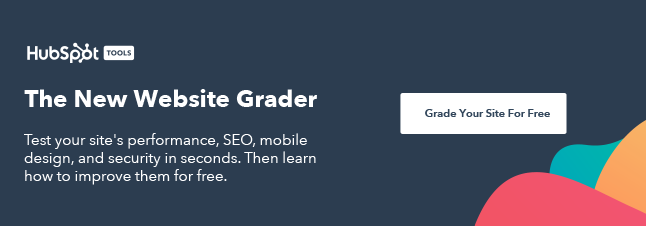
You are out with mates, laughing, having a grand outdated time — when somebody asks the group a complete brainteaser: “Why do not ‘B’ batteries exist?”

You are stumped. Your folks are stumped. You whip out your smartphone and sort the query into the Google machine. And growth: Up pops a battery firm’s weblog publish on the nationally uniform specs for the dimensions of battery cells. It is precisely what you had been in search of, you nerd.
However here is the factor: The content material on the web site is loading as when you’re wanting on the web site on the desktop. In different phrases, the font and photos are actually tiny, and also you’re discovering you’ve to zoom in and scroll forwards and backwards to learn and work together with the content material. Now that is an annoying consumer expertise.
That is an instance of a viewport concern.

What’s a Viewport?
An internet site’s viewport controls the width of a webpage for the machine a consumer is viewing it on.
In case you do not configure your web site’s viewport correctly, you are dooming your cellular guests to a number of, irritating minutes of pinching and zooming. (That’s, in the event that they even select to remain in your web site.) And belief me, that is in all probability a lot of your web site guests, seeing as cellular search queries have already begun to surpass desktop.
In case your web site’s constructed on Content material Hub, you need not fear about configuring a viewport. Your web site will mechanically alter to any machine’s viewport. But when it isn’t, even when you’re utilizing responsive design, you will have to configure your viewport with a purpose to supply a good expertise to your cellular guests.
On this publish, I will present you how you can do exactly that. However first, let’s get a little bit higher of an understanding of how viewports work and what they seem like.
What Your Website Appears to be like Like With a Viewport vs. With out
When you do not set a viewport for cellular units, these units will render a webpage on the width of a typical desktop display after which scale to suit the display in order that the textual content and graphics are tremendous small. That is referred to as the “fallback width,” and it ranges from 800–1024 pixels.
If you do set a viewport for cellular units, the webpage’s width will scale mechanically to a consumer’s cellular machine, giving them a significantly better expertise.
What does that seem like? Under, the display on the left would not have a viewport configured, so the cellular browser assumes desktop width. The display on the fitting does have a viewport configured, so the cellular browser is aware of to match the machine width and scale the web page so the content material’s simply readable.

Picture Credit score: Google Builders
First, Verify to See If You Have A Viewport Configured Already
To examine, go to the Google Cellular Prepared Verify web site. Paste your URL into the empty discipline and hit “Submit” on the backside. The instrument will run your web site by way of Google’s mobile-friendly check, and in case your viewport shouldn’t be configured, it’ll let you know.
In case your viewport is not arrange, maintain studying.
Methods to Configure Your Web site’s Viewport
To configure a cellular viewport, all you need to do is add a meta viewport tag to any and all webpages you prefer to to be mobile-friendly.
To do that, merely copy the HTML snippet under and paste it within the header of your web site.
<meta identify=viewport content material=”width=device-width, initial-scale=1″>
In lots of instances, putting this viewport tag within the header file can have the viewport carry throughout the entire web site, making your total web site extra mobile-friendly. However remember you’ll have to add the viewport tag to each webpage individually, particularly when you use totally different software program on your web site versus your touchdown pages. In case you’re not utilizing an built-in resolution like HubSpot Touchdown Pages or Content material Hub, you will should manually examine to verify your touchdown pages, web site pages, and weblog have this viewport tag so that they’re mobile-friendly.
Notice: Including this tag will not make your web site aware of cellular units — that is a completely totally different course of, described right here — but it surely will make it so cellular customers do not should zoom out and in and scroll forwards and backwards to learn and work together with the content material in your web site.
What’s with the crimson textual content?
In case you depart the crimson textual content (“device-width”) the way in which it’s, that simply means you do not need to set a particular width at which to show your content material — and your webpage will decide up the dimensions of your consumer’s machine mechanically. Most of it would be best to do that.
In case you do need to show a particular piece of content material for a particular machine for one purpose or one other, you then’ll need to exchange that crimson textual content with the pixel width of the specified machine. By setting a width inside the tag (which, once more, shouldn’t be required), then any machine will render at that particular width. (That is typically not beneficial until you’ve designed a web page/web site for a particular display measurement. Additionally, you’ll be able to’t set a couple of viewport tag — you will have to select one machine measurement and persist with it.)
However to illustrate you do need to set a particular width. For instance, the width of iPhones differ, however say you need your web site to show particularly for an iPhone 6 when an individual’s holding it in panorama. iPhone 6’s have a panorama width of 667px, so that you’d put this tag in your web site:
<meta identify=viewport content material=”width=667, initial-scale=1″>
All iPads have a panorama width of 1024px, so that you’d put this tag in your web site:
<meta identify=viewport content material=”width=1024, initial-scale=1″>
Make sense? This is an entire listing of viewport sizes on your reference.
Have in mind that by stating that the width of your structure is the same as the machine width, you will run into issues when customers rotate their cellular units. To get round this, you *may* use JavaScript to conditionally select which meta tag attributes to go along with, as Ian Yates factors out on this weblog publish … however the easiest resolution appears to be to disregard the width altogether and easily maintain it at “device-width.”
The “preliminary scale” a part of the HTML tag can keep at one it doesn’t matter what. It simply ensures that when somebody opens your content material, the structure will likely be displayed correctly at a 1:1 scale. This helps your webpage reap the benefits of the complete panorama width irrespective of the cellular machine’s orientation (portrait versus panorama).
That is it! Have questions? Ask them within the feedback part.
For extra tips about how you can enhance the efficiency of your web site, take a look at our not too long ago revamped Web site Grader. This free on-line instrument generates customized studies primarily based in your web site’s efficiency, cellular readiness, search engine optimization, safety, and extra.
